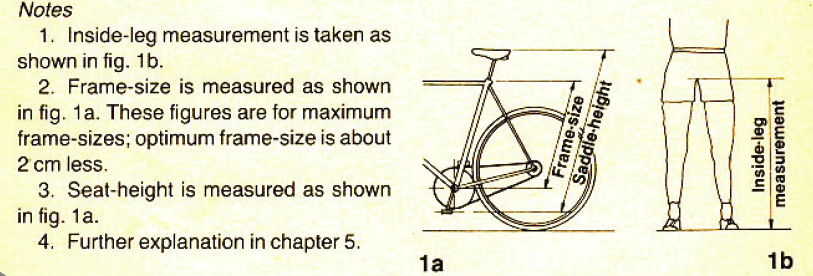I headed off from my house one Saturday early in my biking career, drooling with excitement for the mountain bike ride I’d been awaiting all week. Then, before I had reached the trailhead, I noticed my rear tire was significantly low. I felt like I was riding through mud – on the pavement! Remembering a gas station with an air pump on my way to the trailhead, I figured I could easily pump up my tire without a wasted trip back to my house.
But, when I tried to inflate my mountain bike tire… AAACK! Foiled! The gas station had a standard car pump and, new biker that I was, I forgot my bike tires have a presta valve. A week of hungering for a mountain bike ride… RUINED! All because of a puny little valve. Oh, the angst. Do NOT let this happen to YOU!
Unless you grew up biking, most of us are so familiar with car tire valves, we assume it’s the only type of valve. In truth, car tires use what’s called a Schrader valve. It’s about the diameter of a pencil and has a tiny “button” in the center that, when pressed, allows air in or out, but holds air pressure relatively steady when not compressed.
Presta valves, on the other hand, are significantly skinnier than Schrader valves. They don’t have a button in the center of the valve and instead have an attached screw mechanism at the tip. When screwed closed, it holds air pressure in the tire. When unscrewed, you can pump air in or release air out.
Presta ValveCurrently, presta valves are the most common type of valve on high-end mountain bikes. Racers and high performance cyclists prefer them. They’re becoming increasingly common – even on mountain bikes on the low-end of the price spectrum.
Why, you ask. (Perhaps with a significant number of swear words as you kick your flat mountain bike tire or throw your useless Schrader pump.) Why use an uncommon, obscure valve that doesn’t fit a standard pump? Is it just to make mountain bike newbies suffer? Why? Why?
No, it’s not just to frustrate you.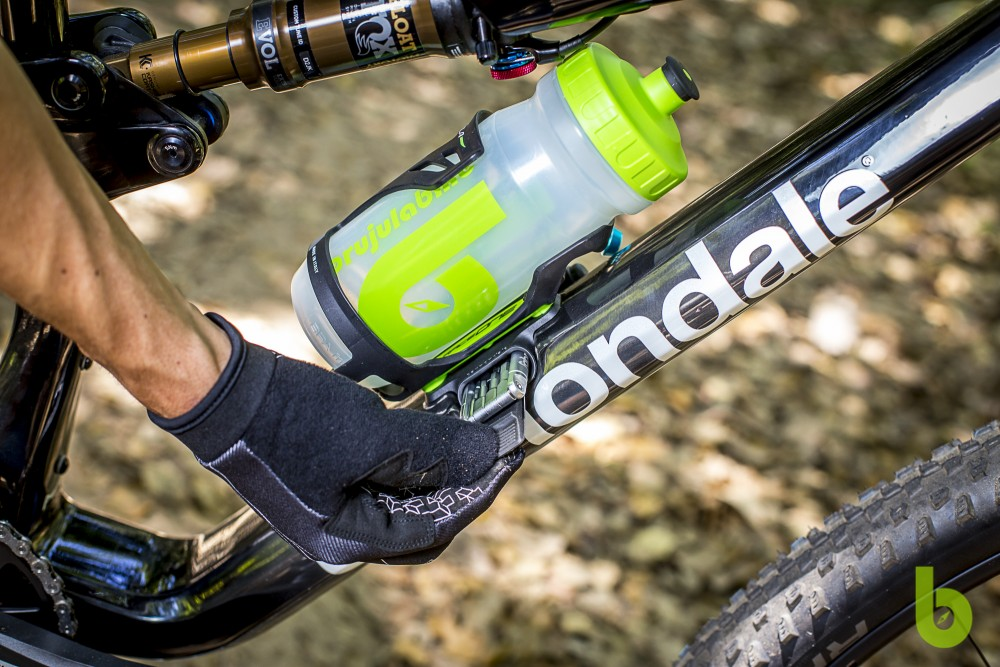
Presta valves are generally more reliable and allow pumping your tires to a more precise pressure. By virtue of design, all Schrader valves release tiny amounts of air over time, requiring occasional “topping off”. Having a cap on the valve can significantly decrease the air loss, but it still means, at any given moment, your tire may not have the pressure you pumped it to.
A casual mountain bike rider may not know what pressure they should be riding or even notice when the pressure is off. But for high-speed riders, tire pressure can have a significant impact on speed, race performance and riding safety.
The screw on the tip of the presta valve allows a rider to close off the tube at the desired pressure and not require a cap. Barring an unnoticed leak or a puncture during a ride, the tire will now reliably hold the pressure you want.
You can inflate a presta valve with a common air pump, such as at a gas station or portable air compressor.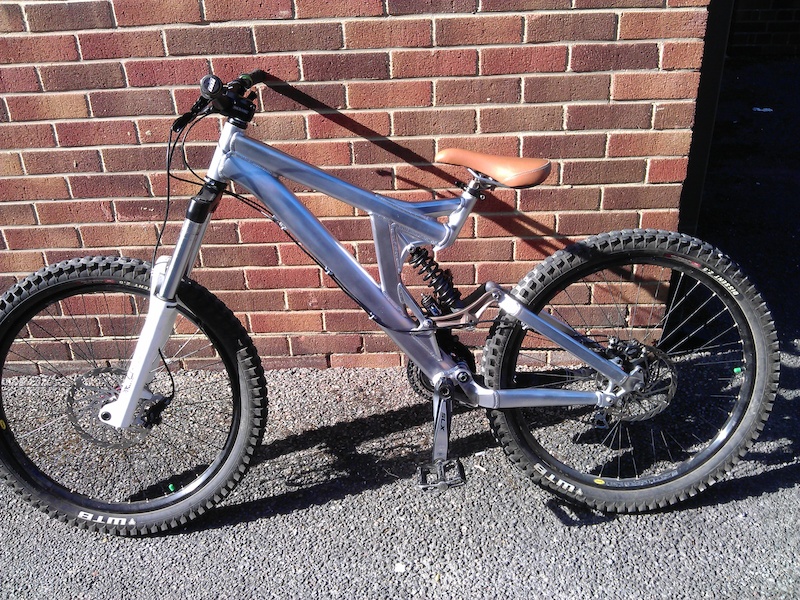 However, you need an adaptor that’s ridiculously small in size but huge in importance: a presta valve adaptor.
However, you need an adaptor that’s ridiculously small in size but huge in importance: a presta valve adaptor.
Here are the steps to inflate a presta valve with a standard pump:
Since more and more mountain bike tires use presta valves, most bike pumps are either universal (meaning one hole works on both presta and Schrader valves) or they have two separate holes, one for each valve type. However, you should always carry a valve adaptor when you ride for situations when a standard pump is the only option. Some cyclists do this by keeping a valve adaptor screwed on their tire valve all the time. Just make sure the valve is screwed closed before putting the adapter on!
Presta valve adapters are extremely tiny and portable. This also means they’re easy to lose. The good news is they’re fairly cheap. I usually buy a handful at a time and keep one in my garage bike tools and one in my portable tool kit for rides. Having one in your glove box isn’t a bad idea, either!
This also means they’re easy to lose. The good news is they’re fairly cheap. I usually buy a handful at a time and keep one in my garage bike tools and one in my portable tool kit for rides. Having one in your glove box isn’t a bad idea, either!
All bike shops sell valve adapters and some general sporting goods shops and hardware stores carry them as well. You can also buy valve adapters online easily and cheaply.
This simple question actually does not have a straightforward answer. The simple rule is to refer to the tire manufacturer’s specs on tire pressure that are printed on the sidewall of your tires. Consensus of riders is that mountain bike pressure should be 30 psi on the front tire and 33 psi for the rear tire. This information should serve you well if you have only a casual interest in mountain biking and are doing entry-level to intermediate trails two or three times a month.
However, if you spend a significant amount of time on your bike (and an equally significant amount of time dealing with pinch flats, blowouts or skidding out on corners), you’ll want to dive deeper into the science of bike tire pressure. DIY Mountain Bike has a fabulous, in-depth article and survey results examining appropriate bike tire pressure.
DIY Mountain Bike has a fabulous, in-depth article and survey results examining appropriate bike tire pressure.
The fastest and easiest (and cheapest) way to check your tire is with your hand. When you squeeze it, it should be hard in the center with only a tiny bit of give farther out on the tire near the treads. A hand test, however, is – not surprisingly – not very accurate!
If you want to be precise, a tire pressure gauge will be necessary. But be warned: tire pressure gauges are notoriously unreliable and the sensitive sensors are easily broken. For my recommendation, read my tire pressure gauge product review.
If you’re in a pinch (perhaps literally!), and you don’t have a universal pump or a valve adapter, you can modify a tube cap to create a functional adapter using a presta valve CAP.
 Find the place on the valve cap where it gets smaller. Cut at that spot with scissors or whatever you have that will do the trick. Throw the tiny tip away.
Find the place on the valve cap where it gets smaller. Cut at that spot with scissors or whatever you have that will do the trick. Throw the tiny tip away.Remember to screw the tire valve shut after inflating! I know you’re tired of hearing that, but it’s important.
Now that you know everything you need to about how to inflate a presta mountain bike tire, you’ll never find yourself hungering for a ride and find yourself deterred by a standard tire pump!
And don’t forget to screw the presta valve closed…
Professional writer Kat Jahnigen was 2 miles from the nearest village – and roughly 2,310 miles – from the nearest English-speaking town – when her bike tire burst. At that time, she was a college student on a bike trip across the desolate, rocky island of Crete. It suddenly occurred to her that it would’ve been good to learn some basic bike repairs before setting off on a solo bike trip.
Check out Kat’s website WriteHire at writehire.net.
Learn how to inflate presta valves in just a few simple steps.
Image Credit: Kelly-anne Leyman/Hemera/Getty Images
You'd think inflating a bike tire would be pretty simple. That is, until you take a look at your bike's valve. Enter, intimidation.
The most common type of bike valve is called a Presta, and it's a long, cylindrical piece of metal that sticks out from the bike's tire. It has a small tip at the end.
Fortunately, you can pump up a Presta in just a few simple steps, according to cycling coach Garret Seacat, CSCS. All you need to fill your tire is a compatible bike pump (more on that below).
Check out this video and step-by-step instructions to learn how to inflate a Presta valve. Then get ready to ride your bicycle flat-tire-free.
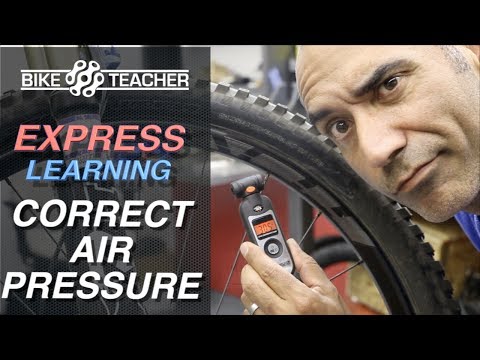 Find and Unscrew the Valve Cap
Find and Unscrew the Valve CapThe valve should be on the inside of your tire. Unscrew the small point (aka nut or cap) near the top of the valve. It will turn in a circle and move upward until it's at the top of the thread. Don't force it past this point, recommends Seacat.
Once the cap is in the top position, press the valve. If you feel a little air coming out, you're ready to go.
Connect the pump head to the top of the valve and lock it in place. (Some pumps require pulling a lever while others involve pressing a button at the end of the hose, he says.)
Start the flow of air, monitoring the tire pressure as it inflates. Continue pumping to the pressure measurement or PSI listed on the tires, Seacat says.
Unlock the head of the pump and remove it from the valve. (Reverse the motion you used to attach the pump.)
Make sure to screw the nut of the valve back into place, Seacat says. Tap the top of the valve. If no air comes out, your job is done.
Tap the top of the valve. If no air comes out, your job is done.
Misplaced your cap or need a new one? You can buy a replacement to keep your tires inflated and valve damage-free
While most bike pumps are compatible with Presta valves, some aren't. Scraders are another common type of pump and fit with (you guessed it) Schrader valves. (You can check your bike pump's manual or online product description to figure out which kind of pump it is.)
Fortunately, if you have a Schrader pump, you can still use it to inflate a Presta valve — you just need an adapter. These are super easy to install (generally all you do is screw them onto the valve) and inexpensive to buy online.
The Best Presta Valve Adaptors
 com, $5.99 for 5)
com, $5.99 for 5)Related Reading
It's a good idea to check the tire pressure before every ride. For normal operation of tires, they must have a certain air pressure, which is important to maintain.
Many people know that there are now two types of nipples: the Schrader valve (car nipple) is thicker and cylindrical in shape, and the Presta valve (bike nipple) is thinner and has a locking nut at the end of it, which must be unscrewed to release air. That is, in the case of the Presta valve, you simply unscrew the nut, press on it with your finger, and the air comes out.
A typical mistake many beginners (and not only beginners, by the way) is that they try to inflate tires with a Presta valve with a regular car pump - naturally, no matter how hard you try, this will not work.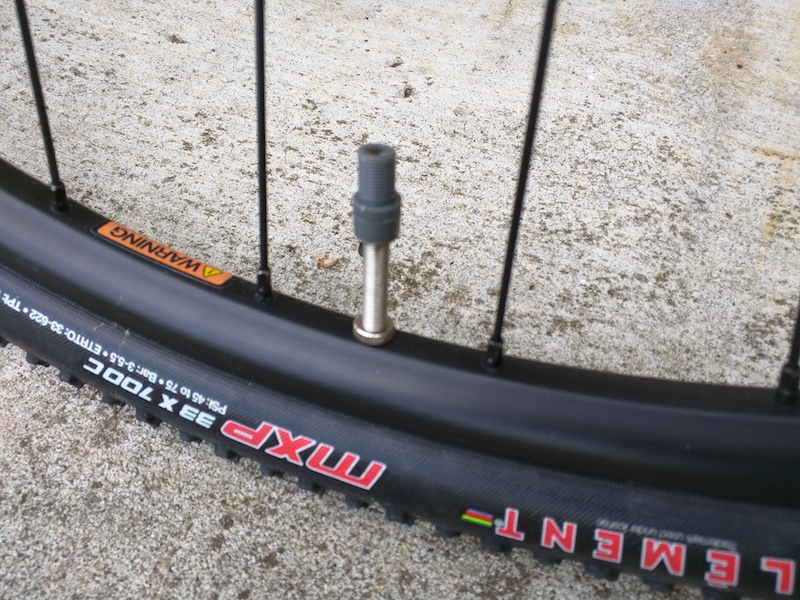
If you're not sure which pump to buy, check out our list of trusted bike pumps, or just ask your cycling friend for advice. In the case of pumps, everything is usually fair - as a rule, you get exactly what you paid for. If you spend a little more money, you'll have a more accurate gauge, a more reliable pump, and even easier tire inflation.
First, unscrew the plastic cap that may be covering the nipple. Sometimes, by the way, caps are lost, and there is nothing to worry about. Then Presta faucet owners often forget this - loosen the little lock nut at the end of the nipple. Do not be afraid here - the nut will not go anywhere, so you can unscrew it right up to the stop. Click on it a couple of times to make sure it moves - when you press it, you should hear the rustle of air escaping. If you have a Schrader valve, you can skip this step.
Before you inflate a tire, look at the tire sidewalls - it should indicate the safe pressure range for this model. Typically road tires are rated between 80 and 130 psi, while mountain bike tires are rated at 25 and 50 psi, respectively. Hybrid bike tires are typically rated at 40 to 70 psi. The optimal pressure for you depends on your weight and riding style - here you need to experiment and see what you like best, or you can use our quick guide.
Typically road tires are rated between 80 and 130 psi, while mountain bike tires are rated at 25 and 50 psi, respectively. Hybrid bike tires are typically rated at 40 to 70 psi. The optimal pressure for you depends on your weight and riding style - here you need to experiment and see what you like best, or you can use our quick guide.
Connect the pump valve to the nipple. Some pumps have an adapter inside the valve that can be reversed to select Presta or Schrader valves, others will have a threaded head. The purpose of both systems is to hold the valve in place while inflating so that air enters the nipple rather than escaping.
If the air is coming out instead of going into the tire, the pump valve may need to be repositioned a bit. Try simply unplugging it from the nipple and plugging it back in.
While looking at the pressure gauge, inflate the tires to the correct pressure. Use hand and body strength when operating the pump. Squats are a good exercise for developing leg strength, but they are not the best for bike maintenance. Therefore, pump with your arms or even your abdominal muscles - the process can really feel like a little workout.
Use hand and body strength when operating the pump. Squats are a good exercise for developing leg strength, but they are not the best for bike maintenance. Therefore, pump with your arms or even your abdominal muscles - the process can really feel like a little workout.
Once the tires are inflated, turn the pump valve to disengage it from the valve and screw the lock nut back on if you have Presta valves. And then just pick up and ride!
When buying a bike, many do not even think that the convenience and comfort when riding it is achieved by properly selected pressure in tires. The service life of the bicycle, the speed of riding, the degree of tire wear, safety, control of the two-wheeled friend depends on how the wheels are inflated.
The service life of the bicycle, the speed of riding, the degree of tire wear, safety, control of the two-wheeled friend depends on how the wheels are inflated.
Many cyclists believe that inflating the tires is only necessary for a good bike ride. However, flat tires have a wider area of contact with the road, which means that grip will be better, but it will be very difficult to accelerate to a speed of 30-35 km / h on such tires.
When inflating your tires, you should always consider the type of terrain or surface you will be driving on. If the walk is supposed to be on an asphalt road, the tire pressure of the bicycle should be close to the maximum allowable value. Elastic wheels on a flat surface will provide a smooth rolling and high speed of movement.
For cross-country riding with unpaved paths, it is better to set the tire pressure to medium tolerable, so that you can ride long distances in comfort and convenience.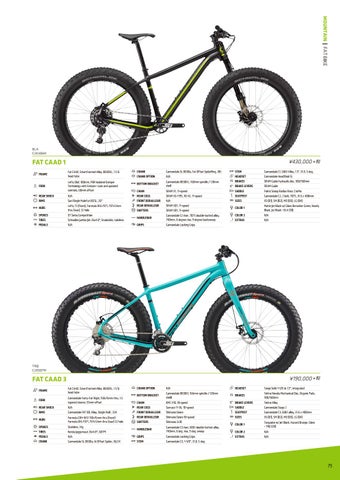 At high pressure, the grip of the wheel with the road will be minimal, respectively, all holes, pebbles, and bumps on the road will be sensitive. And with flat tires, the likelihood of damage to the wheel or puncture of the chamber increases.
At high pressure, the grip of the wheel with the road will be minimal, respectively, all holes, pebbles, and bumps on the road will be sensitive. And with flat tires, the likelihood of damage to the wheel or puncture of the chamber increases.
In order to protect yourself on the road, as well as to keep the bicycle or its individual parts intact, you need to know exactly the lower and upper limits of permissible values, to what pressure the bicycle wheels can be pumped.
Information about tire pressure gives you an advantage when cycling:

Forget the old "old-fashioned" way to check the wheel with your fingers. No need to rely on tactile sensations, trying to feel with your hand the degree of rubber penetration on the tire. The air leaves the wheel gradually, through the pores in the rubber. Within 2-3 weeks, the pressure decreases by 0.1-0.2 atmospheres, but you cannot determine this with your fingers. The exact value at any time will help determine the pressure gauge that every cyclist should have in his arsenal. With its help, it is simple, with a minimum error, the level of pressure in bicycle tires is measured. A pump with a pressure gauge (floor or manual) will become an indispensable tool for cyclists.
There are three standard values in which bicycle tire pressure is measured.
kPa = 14.504 PSI
All these units are used to some extent - in different countries, by different manufacturers. For residents of Russia and the post-Soviet space, the change in bars is more familiar, since this unit is clearly associated with the pressure of the 1st Earth's atmosphere at ocean level. In America and Western Europe, a popular unit is PSI, as they actively use pounds and inches in measurements. Pascals are the least used unit of measurement, but the most modern. Some bicycle manufacturers write data on the wheels about the allowable pressures in all three systems.
For residents of Russia and the post-Soviet space, the change in bars is more familiar, since this unit is clearly associated with the pressure of the 1st Earth's atmosphere at ocean level. In America and Western Europe, a popular unit is PSI, as they actively use pounds and inches in measurements. Pascals are the least used unit of measurement, but the most modern. Some bicycle manufacturers write data on the wheels about the allowable pressures in all three systems.
Manufacturers indicate on the sidewall of the tire how many atmospheres to pump the bicycle wheels. Specifies the range within which the owner of the "iron horse" determines the desired values, depending on the specific factors of riding his bike. Values in the range are labeled from min to max, in two or all three dimensions. Numbers up to 10 are atmospheres (or BAR), tens-hundreds are PSI, and six-digit values \u200b\u200band with the prefix “k” / kilo are Pascals.
When inflating a tire, you must strictly follow the manufacturer's recommendations and try not to go beyond both the minimum and maximum pressure levels indicated on the tire. Moreover, it is better to leave a small margin of 0.2-0.5 BAR, both in one direction and in the other, so that the tire does not burst.
Moreover, it is better to leave a small margin of 0.2-0.5 BAR, both in one direction and in the other, so that the tire does not burst.
The pressure in the wheel is kept by the tire, not the tube, so there is no single standard for its value. There are several significant factors that determine how much you need to pump the wheels on a bicycle.
The type of tire is determined by the surface of the track on which the cyclist will predominantly ride. Accordingly, the level of inflation of the bicycle wheel will be different. There is a direct dependence on the roughness of the tread and the width of the wheel - the more lugs and the wider the wheel, the lower the pressure should be. Empirically, cyclists quickly determine how many atmospheres should be in the tires of their bicycle
Many cyclists do not realize that air temperature affects the pressure level in bicycle tires. From the course of school physics, we recall that when heated, bodies expand. This means that in hot sunny weather, the pressure inside the air chamber will increase without additional pumping. Conversely, on cold winter days, a decrease in tire pressure is quickly felt due to low temperatures. So, when going for a bike ride in the cold season, the pressure indicators need to be adjusted a little higher than usual, and in the summer heat, let the air out a little. It is worth noting that when going on a bike ride, you should always take into account the weather conditions.
From the course of school physics, we recall that when heated, bodies expand. This means that in hot sunny weather, the pressure inside the air chamber will increase without additional pumping. Conversely, on cold winter days, a decrease in tire pressure is quickly felt due to low temperatures. So, when going for a bike ride in the cold season, the pressure indicators need to be adjusted a little higher than usual, and in the summer heat, let the air out a little. It is worth noting that when going on a bike ride, you should always take into account the weather conditions.
It is important to take into account the load on the bike created by the weight of the rider, especially the fact that most of it is on the rear wheel. Therefore, the degree of its pumping should be slightly higher than the front, the optimal difference is 10%.
To calculate the optimal tire pressure for a bicycle, given the weight of its rider, you can use the table:
Rider weight (kg) Pressure (atmosphere) Pressure (PSI)
The nature, riding style and type of bike also affect tire pressure.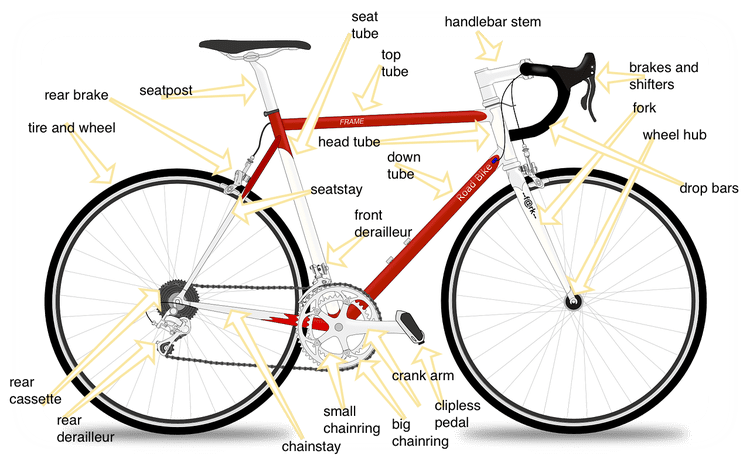 Buyers who prefer an active pastime often opt for mountain bikes with 26-inch wheels, which ride well both on city streets and in rough terrain.
Buyers who prefer an active pastime often opt for mountain bikes with 26-inch wheels, which ride well both on city streets and in rough terrain.
To understand to what pressure to inflate the wheels of a bicycle, it is necessary to take into account the features of both the bike itself and other, at first glance, weightless factors. For example, weaving threads on a tire, rim thickness, driving style. The likelihood of a tire coming off a wide rim is much less than a narrow rim, because a wider rim will hold the tire better than a thin one. Mountain biking already by its name suggests the presence of a difficult surface on the track, with possible obstacles and bumps. The driving style is more aggressive than on a smooth, calm trajectory, it obliges you to increase the tire pressure to a level slightly less than the upper limit.
The diameter of the wheel will also affect the selection of the optimal pressure value, since the larger it is, the higher the volume of air pumped will be.